Abstract
Two pre-schedule-change stimuli were superimposed on the same VI baseline and were thereby equated with respect to reinforcement potential. One such stimulus preceded a transition to an extinction schedule or a VI schedule of lower reinforcement frequency while the other preceded a transition to a VI schedule of higher reinforcement frequency. It was found that response rate during the warning stimulus was greater preceding the transition to the lower reinforcement frequency than it was preceding the transition to the higher reinforcement frequency. That difference was often evidenced by an absolute increase and decrease in rate, in conformity with previous findings on the topic. The present experiment extends previous findings in several ways, including the presentation of quantitative estimates of the effects.
Full text
PDF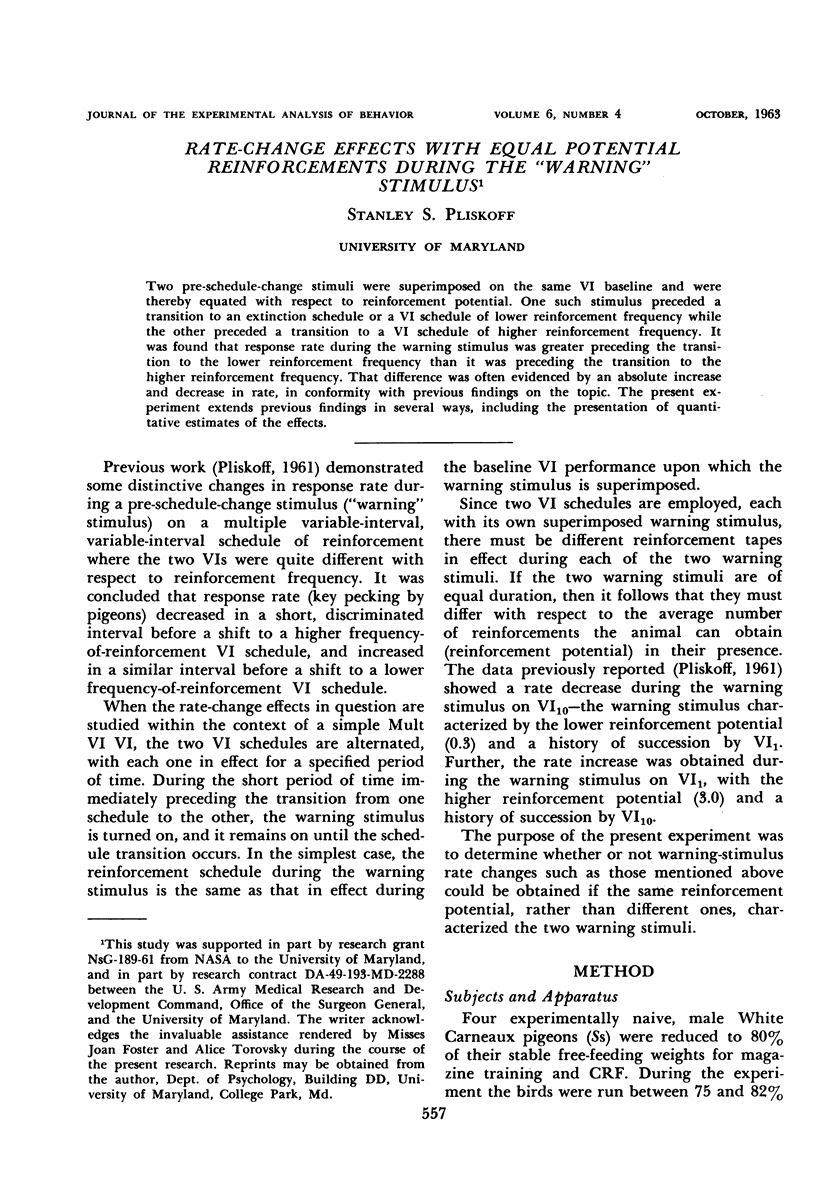
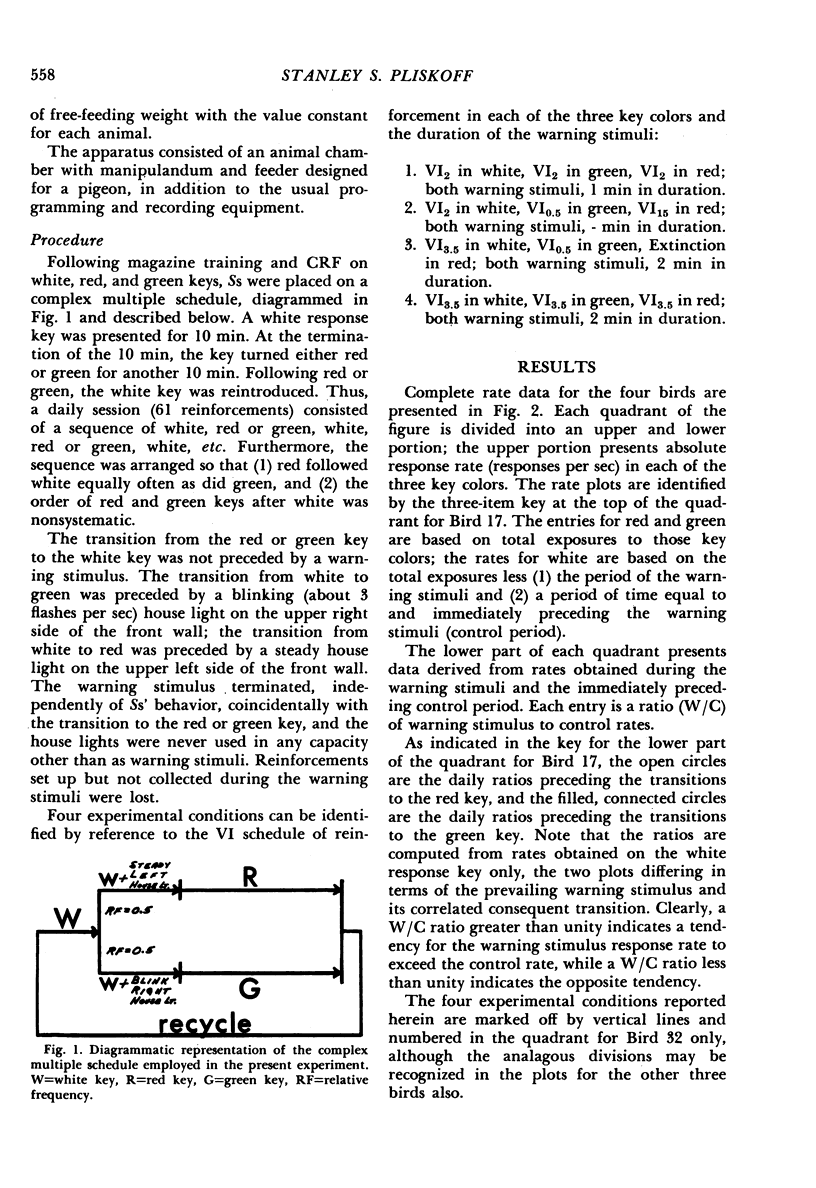
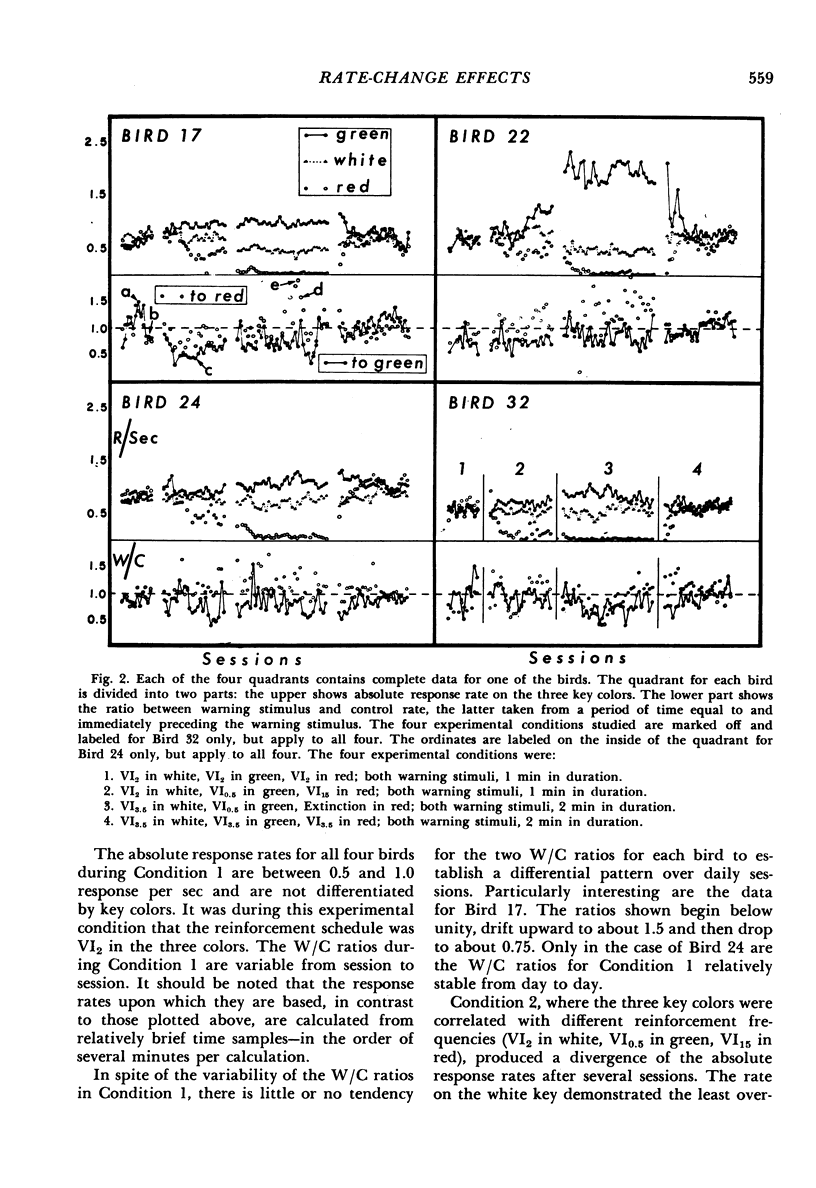
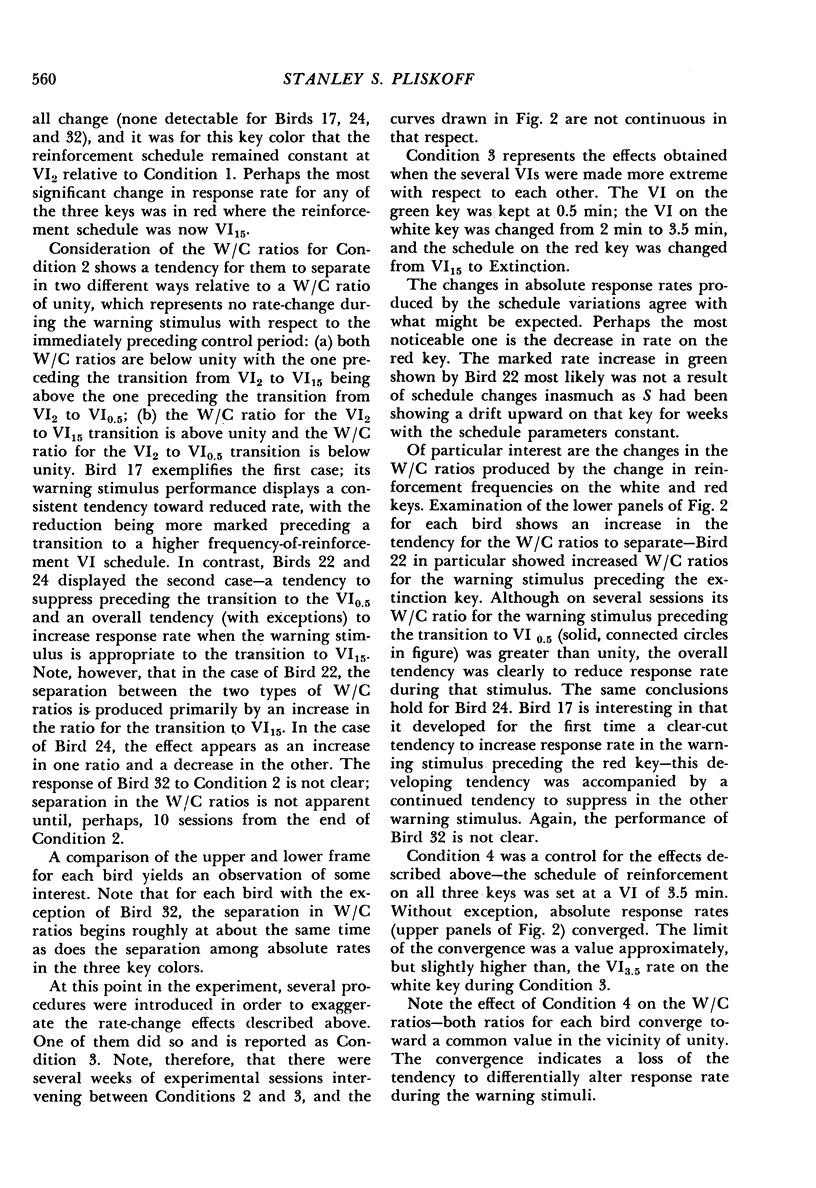
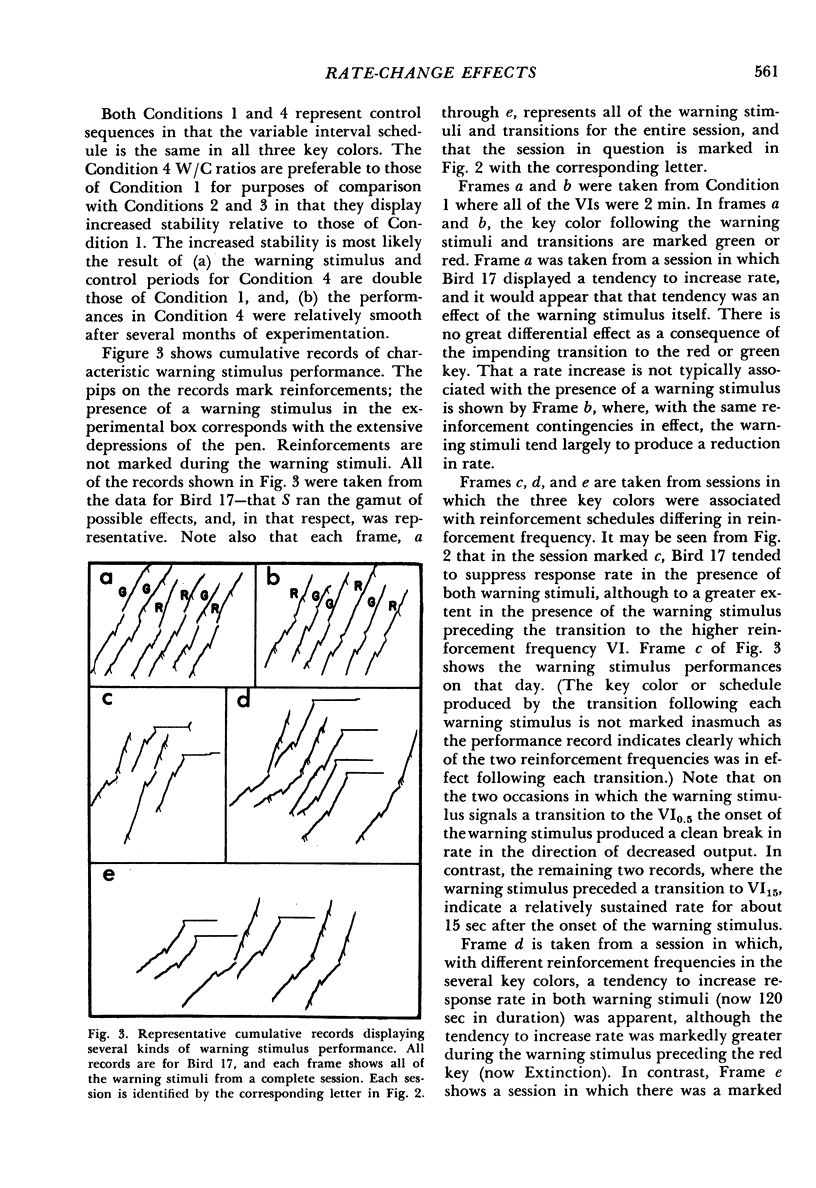
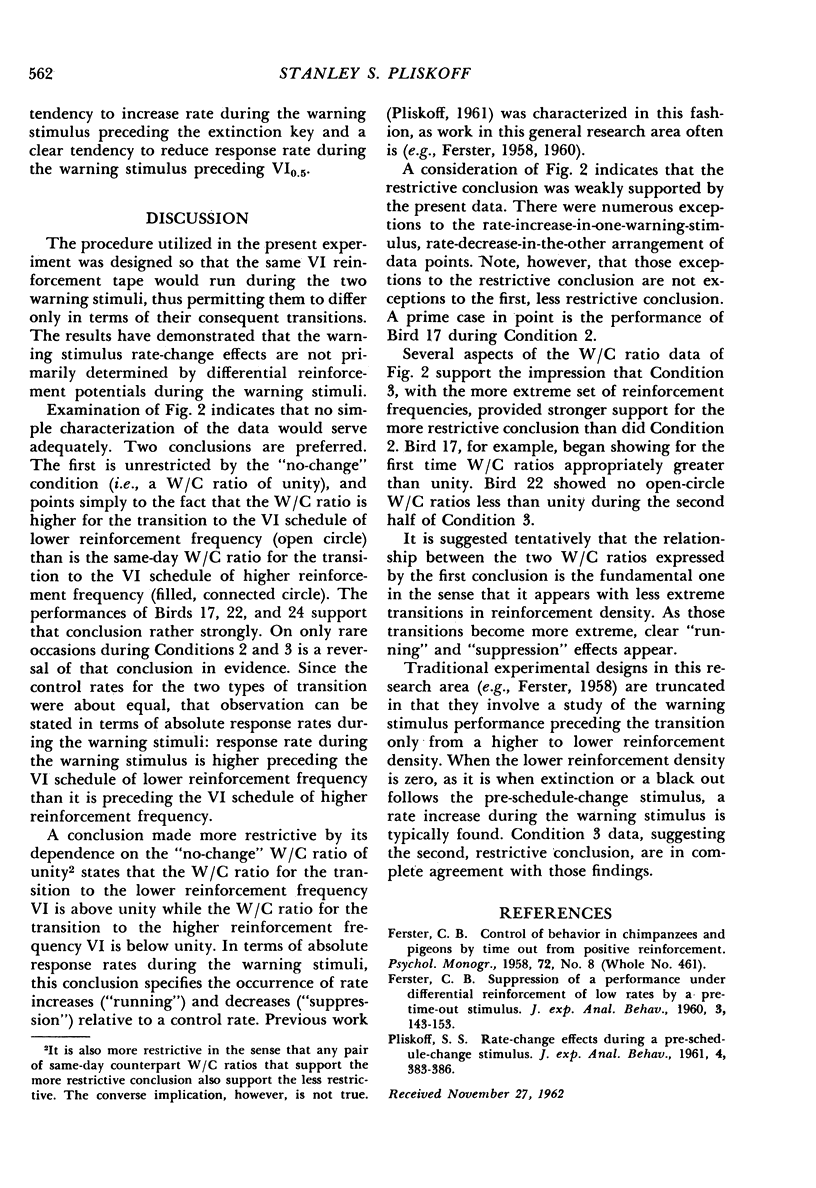
Selected References
These references are in PubMed. This may not be the complete list of references from this article.
- FERSTER C. B. Suppression of a performance under differential reinforcement of low rates by a pre-time-out stimulus. J Exp Anal Behav. 1960 Apr;3:143–153. doi: 10.1901/jeab.1960.3-143. [DOI] [PMC free article] [PubMed] [Google Scholar]
- PLISKOFF S. Rate-change effects during a pre-schedule-change stimulus. J Exp Anal Behav. 1961 Oct;4:383–386. doi: 10.1901/jeab.1961.4-383. [DOI] [PMC free article] [PubMed] [Google Scholar]


